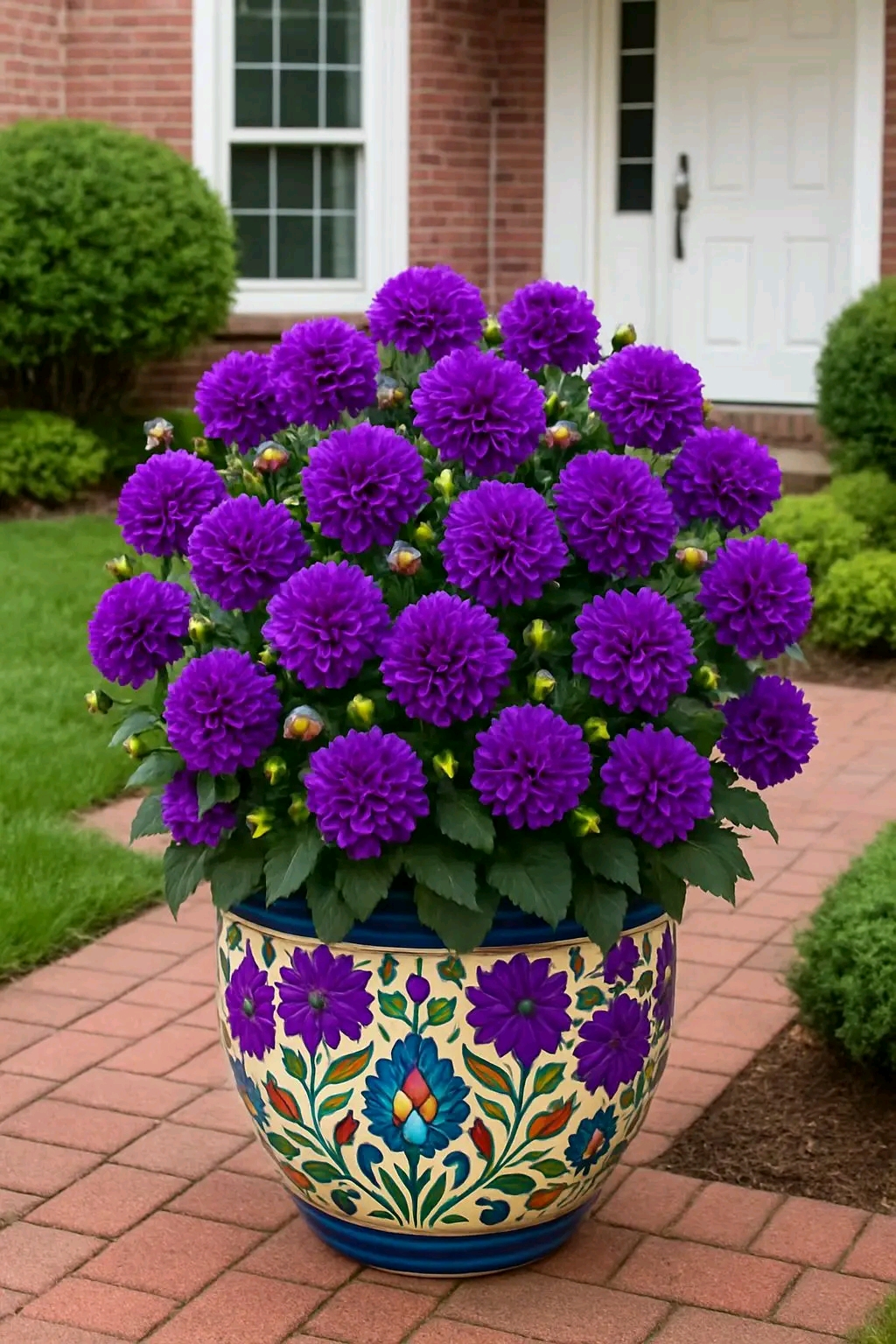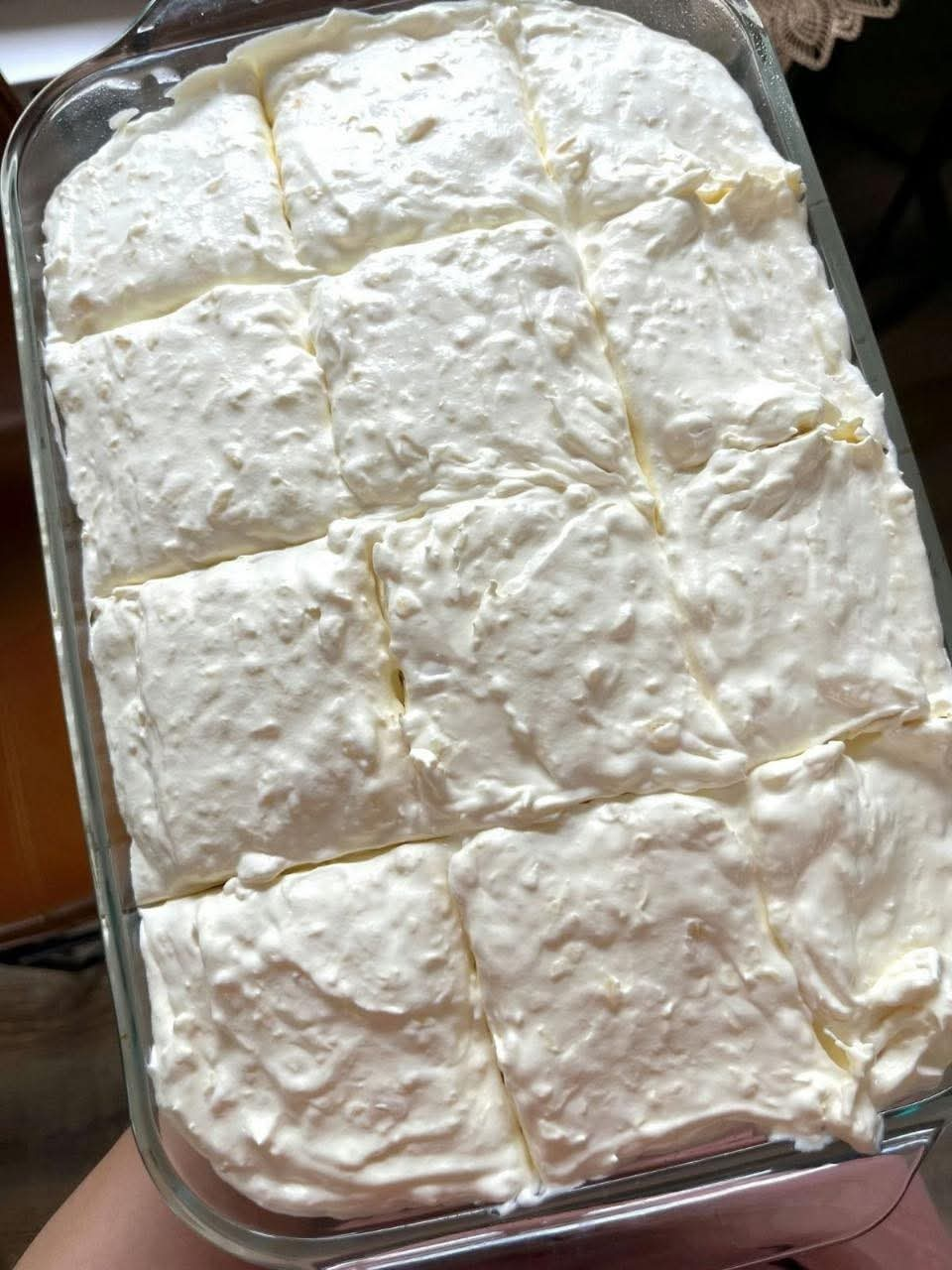🌸
Dahlias are the crown jewels of summer and fall gardens. With their bold colors, intricate petal arrangements, and long bloom season, these plants are perfect for both garden beds and containers. While they look exotic, dahlias are surprisingly easy to grow if you understand their needs.
1. Getting to Know Dahlias
Dahlias (Dahlia pinnata) are native to Mexico and Central America. They are tender perennials in warm climates (USDA zones 8–11) but grown as annuals in cooler regions, where tubers are dug up and stored for winter.
Key Characteristics:
Blooms: Wide range of colors (except true blue) and sizes (2″ pompons to 12″ dinner plates).
Blooming Period: Midsummer until first frost.
Height: Dwarf varieties 12–18 inches; tall varieties up to 6 feet.
Foliage: Lush, green, with serrated leaves.
2. Choosing the Right Dahlia Variety
There are many categories of dahlias:
Pompon/Ball Dahlias — like in your image, with rounded, tightly packed petals.
Cactus Dahlias — spiky petals for a dramatic look.
Decorative Dahlias — large, broad petals with full heads.
Single Dahlias — open-faced blooms, great for pollinators.
Tip: For container growing, choose compact or dwarf varieties unless you have a large, sturdy pot for tall types.
3. When and Where to Plant Dahlias
Timing
Plant after all danger of frost has passed and the soil temperature is at least 60°F (16°C).
In cooler regions, you can start tubers indoors in pots 4–6 weeks before your last frost date.
Location
Full sun is essential — at least 6–8 hours daily.
Choose a location with good air circulation to reduce fungal diseases.
4. Soil Preparation
Dahlias love rich, well-draining soil.
Soil Requirements:
pH between 6.2–6.8 (slightly acidic).
Enrich with compost or well-rotted manure before planting.
Avoid heavy clay; if that’s your soil type, amend with sand and organic matter.
5. Planting Dahlias in the Ground
Prepare Holes:
Small dahlias: 8–12 inches apart.
Large dahlias: 18–24 inches apart.
Depth: 6–8 inches.
Place Tubers:
Lay horizontally with the “eye” (growth point) facing upward.
Do not water immediately — wait until shoots appear to prevent rot.
Staking:
For tall varieties, insert stakes at planting time to avoid damaging tubers later.
6. Planting Dahlias in Containers
Growing dahlias in containers, as in your photo, is ideal for patios and small spaces.
Container Guidelines:
Pot size: At least 12 inches deep for dwarf types; 18 inches or more for larger varieties.
Use a high-quality potting mix with perlite for drainage.
Ensure the pot has multiple drainage holes.
Plant tuber 4–6 inches deep.
Tip: Containers dry out faster, so be prepared to water more often.
7. Watering Dahlias
After planting: Do not water until you see sprouts.
Once growing: Water deeply 2–3 times per week, allowing soil to dry slightly between waterings.
Container dahlias: Check daily in hot weather; water when the top inch feels dry.
Avoid overhead watering to reduce the risk of fungal problems.
8. Feeding Dahlias
Dahlias are heavy feeders and require regular fertilization for strong stems and continuous blooms.
Fertilizer Recommendations:
Use a low-nitrogen fertilizer (e.g., 5-10-10 or 10-20-20) to promote blooms over foliage.
Start feeding once plants are 1 foot tall, then every 3–4 weeks.
Avoid overfeeding nitrogen — it results in lush leaves but fewer flowers.
9. Supporting and Training Plants
Tall dahlias require staking or caging to keep blooms upright and prevent wind damage.
Methods:
Wooden or metal stakes: Tie stems loosely with soft ties.
Tomato cages: Good for smaller, bushier varieties.
10. Pruning and Deadheading
Pinching: When plants reach 12–16 inches tall, pinch out the top growing tip to encourage bushy growth and more flowers.
Deadheading: Remove spent blooms regularly to extend flowering.
Thinning: For larger blooms, remove smaller side buds so energy goes into the main flower.
11. Common Pests and Diseases
Pests:
Aphids
Spider mites
Thrips
Slugs/snails (especially early in the season)
Control: Use insecticidal soap, neem oil, or hand-picking.
Diseases:
Powdery mildew
Botrytis (gray mold)
Root rot (from waterlogged soil)
Prevention:
Plant in sunny, airy spots.
Avoid wetting foliage.
Remove and dispose of diseased leaves promptly.
12. Overwintering Dahlias
In frost-free zones, dahlias can stay in the ground year-round. In colder climates:
Wait until frost blackens the foliage.
Cut stems back to 4–6 inches.
Carefully dig up tubers, shake off excess soil.
Let them dry for a day in a frost-free, airy spot.
Store in peat moss, vermiculite, or sawdust in a cool (40–50°F), dark place.
Check periodically for rot or shriveling.
13. Companion Planting and Design Ideas
Dahlias pair beautifully with:
Salvia — spiky blooms contrast with round dahlia heads.
Cosmos — airy filler plants.
Zinnias — extend color harmony in beds.
Ornamental grasses — add texture.
In containers, use trailing plants like petunias or sweet potato vine for a cascading effect.
14. Cut Flower Care
Dahlias are prized as cut flowers. To make them last:
Cut blooms in the morning or evening when temperatures are cool.
Use a sharp knife or shears, cutting just above a leaf node.
Immediately place stems in warm water.
Change water daily and recut stems every 2–3 days.
15. Troubleshooting Tips
No blooms? Too much nitrogen, not enough sun, or heat stress.
Floppy stems? Plant needs staking or stronger sunlight.
Yellow leaves? Overwatering or nutrient deficiency.
🌟 Final Thoughts
Dahlias are a showstopper in any garden or patio display, rewarding you with months of dazzling flowers. With the right soil, sunlight, and care, you can grow container dahlias like the purple beauty in your photo — a living bouquet right outside your door.
From planting to overwintering, dahlias offer a rewarding gardening experience for both beginners and seasoned growers. Give them the attention they crave, and they’ll give you blooms that turn heads and lift spirits.
More Articles You Might Like
-
Texas Toast Sloppy Joes: The Crunchy, Cheesy Upgrade You Didn’t Know You Needed
There’s something timeless about sloppy joes. For generations, this saucy, savory, and slightly sweet ground beef sandwich has been a go-to comfort food in American kitchens. It’s quick, filling, and family-friendly—perfect for busy weeknights. But what if we told you there’s a way to take this classic dish up a notch? Enter the Texas Toast…
-
Classic Pig Pickin’ Cake
When it comes to Southern desserts, few sweets shine as brightly as the Classic Pig Pickin’ Cake. This nostalgic cake, sometimes called a “Mandarin Orange Cake,” has roots deep in Southern tradition. It gets its playful name from its frequent appearance at pig pickin’s—Southern-style barbecue gatherings where communities come together to enjoy slow-cooked pork, sides,…
-
Lemon Garlic Butter Chicken with Creamy Parmesan Pasta
There’s something irresistible about the combination of tender, golden-browned chicken paired with a creamy pasta coated in Parmesan cheese. Add the brightness of lemon, the depth of garlic, and the richness of butter, and you have a recipe that feels indulgent yet approachable enough for a weeknight dinner. Lemon Garlic Butter Chicken with Creamy Parmesan…



